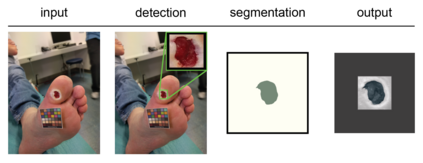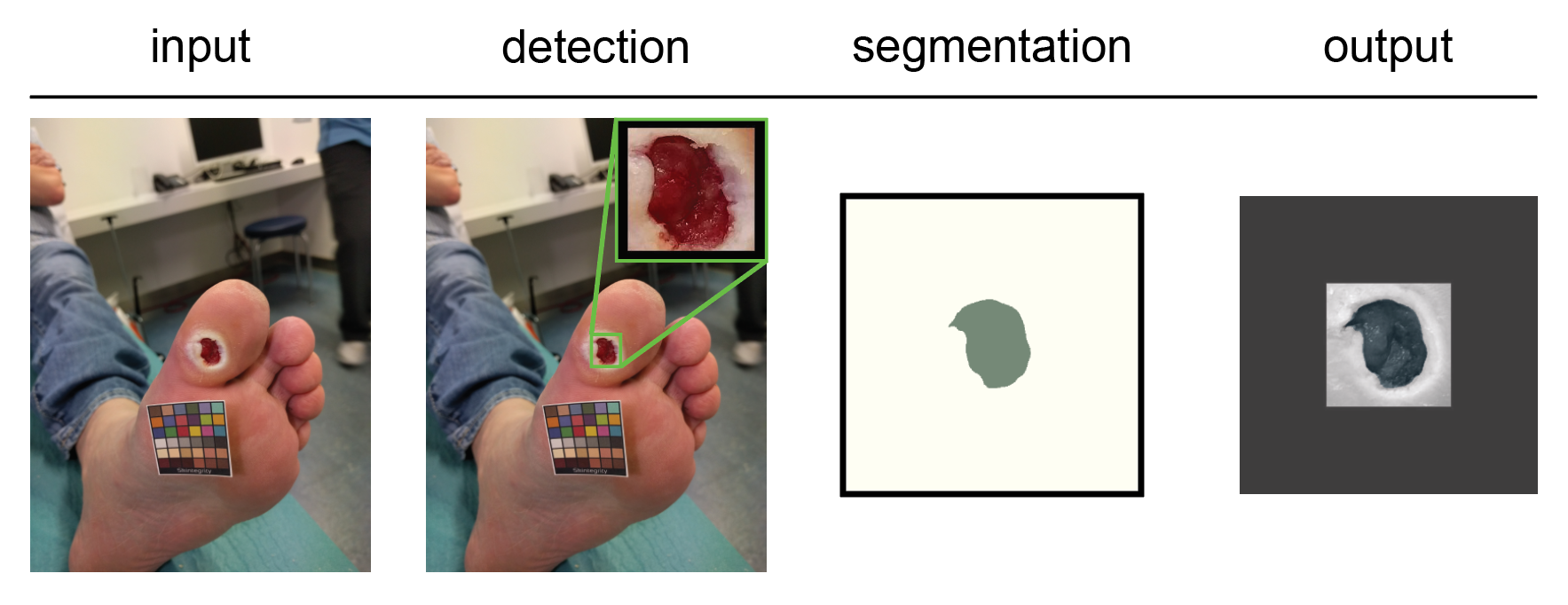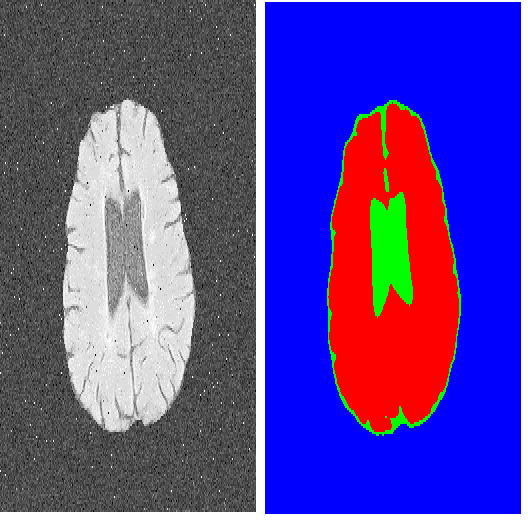Chronic wounds significantly impact quality of life. If not properly managed, they can severely deteriorate. Image-based wound analysis could aid in objectively assessing the wound status by quantifying important features that are related to healing. However, the high heterogeneity of the wound types, image background composition, and capturing conditions challenge the robust segmentation of wound images. We present Detect-and-Segment (DS), a deep learning approach to produce wound segmentation maps with high generalization capabilities. In our approach, dedicated deep neural networks detected the wound position, isolated the wound from the uninformative background, and computed the wound segmentation map. We evaluated this approach using one data set with images of diabetic foot ulcers. For further testing, 4 supplemental independent data sets with larger variety of wound types from different body locations were used. The Matthews' correlation coefficient (MCC) improved from 0.29 when computing the segmentation on the full image to 0.85 when combining detection and segmentation in the same approach. When tested on the wound images drawn from the supplemental data sets, the DS approach increased the mean MCC from 0.17 to 0.85. Furthermore, the DS approach enabled the training of segmentation models with up to 90% less training data while maintaining the segmentation performance.
翻译:慢性伤口会严重影响生活质量。如果管理不当,它们会严重恶化。基于图像的伤口分析有助于通过量化与愈合有关的重要特征来客观地评估伤口状况。然而,伤口类型、图像背景构成和捕捉条件的高度异质性对伤口图像的稳健分解提出了挑战。我们展示了检测和分层(DS),这是一种深层学习方法,用高一般化能力制作伤口分解图。在我们的方法中,专门的深神经网络检测了伤口位置,将伤口从无信息化背景中分离出来,并计算了伤口分解图。我们使用一个带有糖尿病脚溃疡图像的数据集评估了这一方法。为了进一步测试,使用了4套来自不同身体位置的伤口类型更为多样的辅助独立数据集。马修斯的关联系数(MCC)从计算全图像的分解过程的0.29提高到0.85,同时将检测和分解结合起来。在测试从补充数据集中提取的伤口图像时,DS方法将中中值的中中值的内核分器从0.17提高到0.85。此外,DS方法使数据部分的分数培训得以进行低段。








